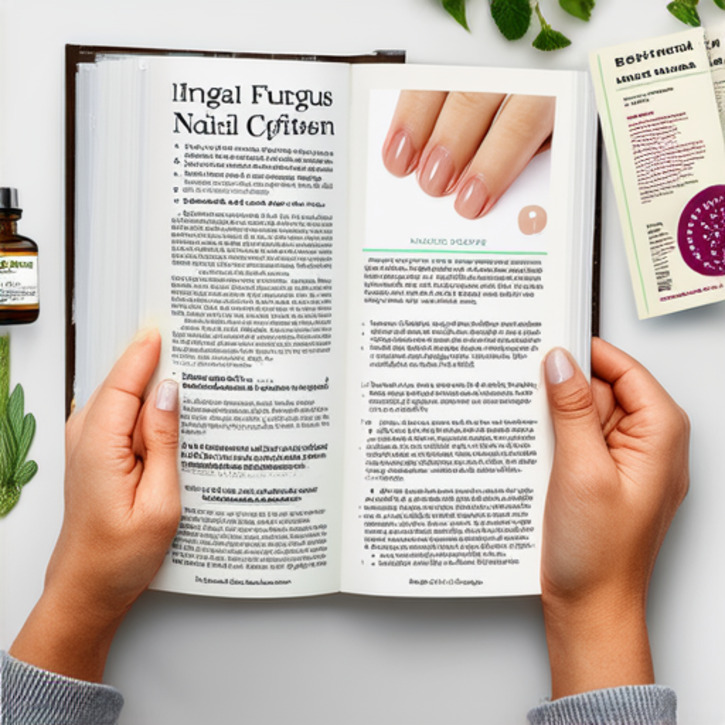Medical vs. Natural: The Best Way to Get Rid of Nail Fungus

Introduction: Let's Talk About Nail Fungus and What You Can Do
Nail fungus, or onychomycosis as the docs call it, might start off seeming like a tiny annoyance, but before you know it, those nails on your fingers or toes can become discolored, thick, and even break apart. It’s more than just an aesthetic issue—this pesky problem can shake up your health and self-esteem too. Today, we’re diving into both tried-and-true medical treatments and some natural, holistic options to figure out what really works best when it comes to kicking nail fungus to the curb. We’re breaking everything down based on solid expertise and years of experience, so you get the lowdown that’s both practical and trustworthy.
So, What Exactly Is Nail Fungus?
Simply put, nail fungus is an infection caused by dermatophytes, yeasts, or molds that love warm and damp conditions. Many people first notice something’s off when their nails start to look dull and thicken up. The fungus gets to the nail bed, messing with how your nail grows naturally, which can leave you with brittle, crumbly nails. Spotting these early signs is key because catching it early can mean a less drastic treatment down the road. Knowing the ins and outs of nail fungus sets you up with the realistic expectations you’ll need for a smooth recovery—not just clearing the infection, but also letting your nails look and feel like new.
What's Behind Nail Fungus and How Can You Tell?
There are a bunch of reasons why nail fungus might rear its ugly head, from frequenting damp public showers and pools to dealing with minor cuts or injuries near your nail. Add in factors like excessive sweating or nails that rarely get a breath of fresh air, and you’ve got a recipe for fungal growth. Typically, you might notice yellowish or white spots along with thickening nails, and over time, those nails can warp and become downright uncomfortable, whether you're walking, typing, or just going about your day. The changes usually creep up slowly, so catching them early can save you from bigger hassles later on.
Nail Fungus and How It Affects Your Everyday Life
Beyond the physical symptoms, nail fungus can really take a toll on your mood and how you see yourself. Many folks feel embarrassed about their nails, which might make them avoid places like gyms or pools. This condition doesn’t just hurt your nails—it can hit your self-esteem hard, especially if you’re active or need your hands looking sharp for work. In this way, nail fungus is not simply a cosmetic nuisance; it’s a real challenge that affects your social interactions and mental well-being. That’s why finding the best way to get rid of nail fungus isn’t only about health, but about restoring confidence and peace of mind.
Medical Treatments: Getting Rid of Nail Fungus Once and For All
When it comes to eliminating nail fungus effectively, medical treatments are your go-to for a reason—they’re backed by solid science and clinical research. Doctors often turn to prescription medications and even cutting-edge procedures to tackle infections that over-the-counter fixes just can’t beat. Yes, these treatments might hit your wallet a bit harder and come with potential side effects, but they’re generally seen as having a higher success rate, especially when the infection gets really stubborn. Let’s walk through what these medical options look like, so you can see what might suit your situation best.
Breaking Down Your Medical Options
From antifungal creams and lacquers to oral medications, medical treatments target nail fungus head-on by fighting off the pathogens causing it. Experts often recommend a mix of treatments—starting with a medicated lacquer to weaken the enemy, then moving on to oral prescriptions if needed. While these options require a prescription and sometimes a bit of patience during the healing process, they’ve been clinically proven to shrink and sometimes even eliminate the infection. It all comes down to the severity of your case and your overall health when deciding if the medical route is the way to go.
Prescription Meds: What You Need to Know
If you’re dealing with a stubborn nail fungal infection, prescription medications like terbinafine and itraconazole are commonly mentioned for a good reason—they pack a serious punch. They work by digging deep into the nail bed to stop the fungus in its tracks. While many folks see positive results, it’s worth noting that these drugs can come with side effects, such as stomach troubles or even liver issues. That’s why your doctor will likely keep a close watch on you, fine-tuning dosages and treatment length to maximize results while keeping risks in check. For more persistent infections, these medications are often at the center of the conversation on the best way to get rid of nail fungus.
In-Office Procedures: Laser Treatments and More
If pills and creams aren’t doing the trick, there are in-office procedures that might just be the ticket. Laser treatments, chemical nail avulsion, and debridement are advanced methods recommended especially for tough cases. Laser therapy uses a focused beam of light to heat and destroy the fungus without harming surrounding skin—quite nifty, right? While you might need a few sessions, many people appreciate the less-invasive nature and faster overall recovery time. It’s always wise to consult with a dermatologist or podiatrist to see if these options are right for you, as they require specialized equipment and know-how.
Natural Remedies: Can They Really Beat Nail Fungus?
On the flip side, many people are drawn to natural remedies in hopes of finding an organic fix for nail fungus. These approaches usually focus on a more holistic treatment method, using diet modifications, herbal supplements, and home-made treatments to help rebalance your body. The idea here is to bolster your natural defenses while discouraging fungal growth. Although these methods have been around for ages, it’s good to stay cautious since not every remedy is backed by hard clinical evidence. Still, avoiding heavy medications or invasive procedures is a big plus for some, making natural solutions an attractive option for many.
Herbal and Home Remedies That Might Just Do the Trick
Herbal treatments and classic home remedies have been handed down through generations as a natural way to battle nail fungus. Take tea tree oil, for instance—renowned for its antifungal superpowers—it's one of the most popular choices out there. Oregano oil, garlic extracts, and coconut oil also come highly recommended because of their antimicrobial qualities. The idea is pretty simple: apply these remedies directly on your affected nails over time and let nature do its work. Sure, consistency is key, and sometimes you’ll need to pair these treatments with lifestyle tweaks, but many folks swear by these natural methods when they’re used properly.
Eating Right: How Dietary Tweaks Can Help Your Nails
It might surprise you, but what you eat plays a role in how healthy your nails stay too. Adjusting your diet to include foods rich in biotin, zinc, and vitamins A, C, and E can actually support nail strength and boost your immune system. Antioxidant-packed foods help fight off stressors that may weaken your nails, too. Some experts argue that a balanced diet—not to mention targeted supplements—can be just as important as what you put on your nails externally. In the long run, good nutrition could be your secret weapon in preventing pesky fungal recurrences.
Deciding on the Best Way to Get Rid of Nail Fungus: A Comparative Look
Choosing the best method to kick nail fungus to the curb often comes down to comparing the pros and cons of both medical and natural remedies. Medical treatments offer a more scientifically solid route with impressive efficacy for deep-seated infections, while natural approaches have a charm of being less invasive and more holistic. Your final choice may depend on things like your general health, how bad the infection is, and even your budget. Remember, there isn’t a one-size-fits-all answer—what works best for someone else might not be your ideal match.
Effectiveness: Weighing Medical Versus Natural Options
If we’re talking effectiveness, it’s usually a mix of factors like how deep the infection runs, the type of fungus, and your overall health. Medical treatments often come out ahead in studies with well-documented results thanks to their targeted approach. Prescription meds and laser therapies have a solid track record in clinical settings, with many people seeing significant improvement over the course of a few months. On the flip side, natural remedies tend to offer gradual improvements and might need a bit more patience. While some folks report stellar results with natural methods, these claims are often based on personal experience rather than standardized research.
Recovery Time: What to Expect
Expectations around recovery can be all over the map—medical treatments might show quicker signs of improvement but often need several months for your nail to grow back completely fungus-free. For example, oral medications might take up to a year before you see a healthy nail replace the old, infected one. Natural remedies, conversely, might start showing subtle improvements over time as your body adjusts and heals with the help of diet and herbal interventions. No matter which route you choose, tracking your progress can help ease the worry and allow you to tweak your approach if needed.
Keeping Track and Tweaking Your Treatment Plan
Whether you’re going the medical or natural route, regularly checking your progress is key. With medical treatments, your dermatologist or podiatrist will likely schedule follow-ups to see how well the treatment is working and adjust your medicine if needed. If you’re leaning towards natural remedies, it might be helpful to jot down any changes you notice—both the wins and the setbacks. Adjustments, like mixing in new supplements or changing how often you apply an herb, can be the difference between success or a lingering infection. The bottom line? A flexible, tailored approach often works best.
Maintaining Long-term Nail Health and Stopping Future Infections
Treating the current nail fungus is only part of the puzzle—the long-term goal is to keep it from coming back. Medical treatments often come with follow-up care, lining up good hygiene habits, and sometimes even preventive medications for those at high risk. For fans of natural remedies, the focus is on bolstering your immune system and supporting nail strength through smart diet and lifestyle choices. Simple things like wearing breathable shoes and using antifungal powders can work wonders as extra steps to keep infections at bay. Often, blending both approaches might just be the smartest strategy for long-lasting nail health.
Safety and Side Effects: How to Get Rid of Nail Fungus Without the Worry
No matter which treatment path you choose, safety always comes first. The best way to get rid of nail fungus safely means balancing the potential risks and side effects that come with both medical and natural methods. With medical treatments, there’s a chance you could experience reactions like skin irritation, liver issues, or allergic responses, which is why your doctor will carefully evaluate you before starting any regimen. Even natural remedies, although often thought of as gentler, can sometimes cause sensitivities, especially when applied directly to your skin. If any red flags pop up, it’s wise to check in with a healthcare pro. The trick is to do your research and keep a close eye on how your body responds.
Potential Downsides of Medical Treatments
While medical treatments for nail fungus are solidly backed by research and trusted by professionals, they’re not without their risks. Prescription drugs can occasionally lead to mild skin issues or more serious side effects, like liver toxicity if not properly monitored. Laser treatments, although innovative and generally safe, might sometimes leave you with a bit of discomfort or even a minor burn if not done correctly. Because everyone’s body is different, it’s crucial to make these decisions in tandem with a trusted healthcare provider who can tailor the treatment to your needs.
Natural Remedies: A Safer Bet—or Not?
Nature seems like the gentle, go-to option, and natural remedies are indeed made from ingredients many of us trust—like essential oils and herbs. But remember, “natural” doesn’t always equal risk-free. Even common items like tea tree oil can cause allergic reactions or skin irritation in some people, and without standardized testing, the concentration of these products can be all over the map. Stick with reputable sources and do a patch test before going all in. While generally having a milder side-effect profile than some robust medical treatments, using natural remedies sensibly is key.
When Is It Time to See a Professional?
No matter what path you choose, knowing when to consult a professional is crucial. If your nail fungus is getting worse—or isn’t improving after months of consistent treatment—it’s time to get a healthcare provider’s input. Think significant pain, widespread discoloration, or even signs that the infection is flirting with affecting other parts of your skin. And if you have underlying health conditions like diabetes or a compromised immune system, playing it safe by seeking expert advice sooner rather than later is a smart move.
Cost Considerations: Treating Nail Fungus Without Breaking the Bank
Money always matters, and when it comes to treating nail fungus, it’s no different. Medical treatments can put a dent in your budget due to expensive prescription meds, in-office procedures, and follow-up visits—even if insurance picks up part of the tab, co-pays and extra costs can add up fast. On the flip side, natural remedies might seem more attractive price-wise since ingredients like tea tree oil, garlic, or coconut oil are pretty accessible. However, don’t be fooled—these home treatments can add up if you need to use them consistently and over a long period. So, whether you’re looking at a quick fix or a long-term strategy, weighing the costs is an important part of your decision-making toolkit.





